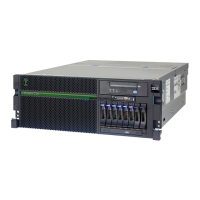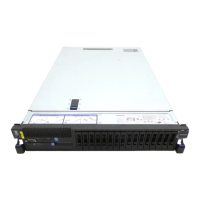Cables
50/125 micron fiber (500 MHz*km bandwidth cable)
v 1.0625 Gbps 0.5 – 500 m
v 2.125 Gbps 0.5 – 300 m
v 4.25 Gbps 0.5 – 150 m
62.5/125 micron fiber (200 MHz*km bandwidth cable)
v 1.0625 Gbps 0.5 – 300 m
v 2.125 Gbps 0.5 – 150 m
v 4.25 Gbps 0.5 – 70 m
Maximum number
For the maximum adapters supported, see the PCI adapter placement topic collection for your
system.
For details about slot priorities and placement rules, see the PCI adapter placement topic collection for
your system.
Operating system or partition requirements
If you are installing a new feature, ensure that you have the software that is required to support the new
feature and that you determine whether there are any prerequisites for this feature and attaching devices.
To check for the prerequisites, see IBM Prerequisite website (www-912.ibm.com/e_dir/eServerPrereq.nsf).
The adapter is supported on the following versions of the operating systems:
v AIX
– AIX 7.1, or later
– AIX 6.1, or later
– AIX 5.3, or later
v Linux
– Red Hat Enterprise Linux 5.6 for POWER, or later
– SUSE Linux Enterprise Server 11 Service Pack 1, or later
v IBM i
– IBM i 7.1, or later
– IBM i 6.1, or later
Adapter LED states
Green and yellow LEDs can be seen through openings in the mounting bracket of the adapter. Green
indicates firmware operation and yellow signifies port activity. Table 17 summarizes normal LED states.
There is a 1 Hz pause when the LED is off between each group of fast flashes (1, 2 or 3). Observe the
LED sequence for several seconds to ensure that you correctly identify the state.
Table 17. Normal LED states
Green LED Yellow LED State
On 1 fast flash 1 Gbps link rate - normal, link active
On 2 fast flashes 2 Gbps link rate - normal, link active
On 3 fast flashes 4 Gbps link rate - normal, link active
Power-On Self Test (POST) conditions and results are summarized in Table 18 on page 37. These states
can be used to identify abnormal states or problems.
36 Power Systems: Managing PCI adapters for the IBM Power 710 Express or the IBM Power 730 Express
